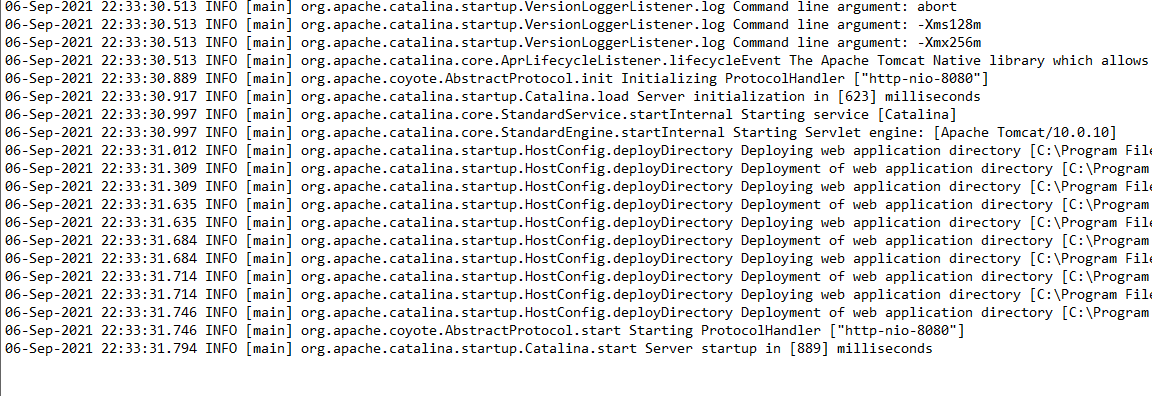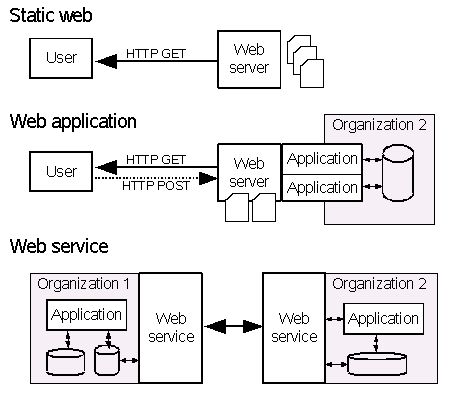
SSL certificates can be used in several fields. These include keyUsage, accessMethod. The most important is the keyUsage Extension. Other common fields include keyPath (the organization name) and keyPath (the keyUsage extension). These information are available in the Common field of SSL certificates article. This article also includes information about keyUsage, accessMethod and Organization Validation certificates.
SSL certificates have common fields
SSL certificates share several common fields. The signature algorithm of a certificate is the first. It contains encryption and hashing algorithms. The second is the body of the certificate. This is hashed with the issuer's key and encrypted using encryption algorithms. These fields are used for identifying the certificate's issuer.
SSL certificates also have an optional field known as Subject Alternative Names. The SAN field contains information about the domains for which a certificate may be valid. In some cases, a single certificate can have multiple SAN fields, which are called Subject Alternative Name (SAN) certificates or Unified Communications Certificates (UCC). Although SSL clients tend to ignore the SAN field, it is important for web servers as well as SSL clients.

A validation level is an important field that SSL certificates are useful in. Some certificates require higher validation levels than others. The bare minimum level of validation is called domain validation, while higher-level validations require a deeper background investigation. All three levels offer the same TLS encryption level, but they provide different verifications of the organization's authenticity. Domain validation requires the web site owner to show proof of ownership. This can be accomplished by sending an email, or changing a DNS records. This entire process can be automated.
KeyUsage extension for EV certificates
An EV certificate's keyUsage extension specifies an additional purpose. This extension provides applications with an additional way to find the key that is used to verify a signature. This extension may be critical or noncritical, and it should only be used by the application for the specified purpose.
EV certificates are especially valuable for high-profile websites, which are often targets of phishing attacks. These websites include large technology companies, banks, retailers, and others. These websites should be protected by SSL/TLS certificates.
This extension is typically used for an object signing certificate, but the same principle applies to a client certificate. The keyUsage field must be unique and should use a dot-separated, numeric component notation. EV certificates must comply with the ISO rules known as Object Identifiers.

AccessMethod extensions for Organization Validation Certificates
Organization Validation certificates are used for secure access to the web. They provide an additional level of security beyond domain name level. They are usually stored according to the specifications of the certificate issuer. These certificates are typically encrypted and are compatible with most server and user agent software. The Organization Validation certificate cannot be used if an entity is not legitimate and operational.
The accessMethod extension defines the format in which issuer information may be accessed. It is part PKIX Part 1 and must match key identifiers of the CA.
FAQ
What is a static site?
Static websites are those where all content is stored on a web server and can be accessed by users via their web browsers.
The term "static" refers to the fact that there are no dynamic features such as changing images, video, animation, etc.
This type of website was originally created for use in corporate intranets. It has since been adopted both by individuals and small companies who are looking for simple websites that do not require any programming.
Because static websites require less maintenance, they have grown in popularity. They're easier to update and maintain when compared to a fully-featured website with many different components (such as blogs).
They load much faster than dynamic counterparts. This makes them great for those who have slow Internet connections or users with mobile devices.
Also, static websites are more secure that dynamic counterparts. You can't hack into a static site. Hackers have limited access to data within a database.
There are two main methods to create static websites:
-
Utilizing a Content Management System.
-
How to create a static HTML website
The best one for you will depend on your specific needs. A CMS is a good choice if you are new to website creation.
Why? Because it gives you complete control of your website. A CMS means that you don't have to hire someone to set up your website. All you need to do is upload files to the web server.
Still, you can learn to code and create static websites. You will need to spend some time learning to program.
Are I more likely to be hired for a job as a Web Developer if my portfolio is good?
Yes. You must have a portfolio to be considered for a job in web development or design. Portfolios must showcase your skills and experiences.
Portfolios are usually made up of examples of past projects. You can include anything that demonstrates your skills. Your portfolio should include everything from mockups, wireframes, logos, brochures, websites, and even apps.
Which website builder should I use?
The best way to build an effective web presence is to start small. If you have all the resources and time, then build a website. But if you don't have these resources yet, starting with a simple blog might be the best option. As you learn to develop and design websites, you can always add new features.
But before you build your first website, you should set up a primary domain name. This will provide a point to which you can publish content.
Can I make my website using HTML and CSS?
Yes! You should be able to create a website if you have been following the instructions.
After you have learned how to structure a website, you will need to know HTML and CSS.
HTML stands to represent HyperText Markup Language. This is like writing a recipe. You would list ingredients, directions, etc. HTML allows you to indicate to a computer which portions of text are bold, italicized and underlined. It also lets you know which part of the document is linked. It's the language that documents use.
CSS stands as Cascading Stylesheets. It is like a stylesheet that you use to create recipes. Instead of listing out each ingredient and instruction, you write down general rules for things like font sizes, colors, spacing, and more.
HTML tells the browser how to format a web page; CSS tells it how to do it.
Don't panic if either of these terms are confusing to you. Follow the tutorials and you will soon be creating beautiful websites.
How to design a site?
Your customers will first need to understand the purpose of your website. What do they look for on your site?
What issues might they be facing if they can't locate what they're looking at on your site.
You now need to know how to fix the problems. Your site must look professional. It should be easy to use and navigate.
It is important to have a professional-looking website. It should not take too much time to load. People won't stay as long if it takes too long to load. They'll leave and go elsewhere.
You need to consider where your products are located when you build an eCommerce website. Do they all reside in one spot? Are they all in one place?
Decide whether you plan to sell one product at a time or several products. Do you want to sell just one type of product or multiple kinds?
When you answer these questions, your site can be built.
Now it is time to focus on the technical side. How will you site function? Will it run fast enough? Can it be done quickly by people using their computers?
Will people be able to buy something without having to pay extra? Do they need to register with you before they can purchase anything?
These are the essential questions you should ask yourself. When you have the answers, you can move on.
How much does it cost for a website to be built?
The answer depends on what you are trying to achieve with your website. Google Sites, for example, might not be necessary if you are merely looking to share information about your business or yourself.
However, if visitors are serious about coming to your site, they will be willing to pay more.
The most popular solution is to use a Content Management System (like WordPress). These programs can be used to build a website quickly and easily without having to know any programming. The sites are hosted by third-party businesses, so there is no risk of your site being hacked.
Squarespace is another way to create a website. The plans range from $5 per month up to $100 per month depending on what content you want to put on your site.
What does it mean to be a UI designer
A user interface (UI) designer creates interfaces for software products. They are responsible to design the layout and visual elements for an application. Graphic designers may also be part of the UI designer.
The UI designer should be able solve problems by understanding how people use computers.
A UI designer should be passionate about technology and software development. From the development of ideas to their implementation into code, a UI Designer must have a thorough understanding of all aspects.
They should have the ability to design using various techniques and tools. They should be able to think creatively and solve problems by creating innovative solutions.
They must be organized and detail-oriented. They should be capable of quickly and efficiently developing prototypes.
They must be comfortable working with clients of all sizes. They should be able to adapt to changing situations and environments.
They must be able communicate with others effectively. They must be able express themselves clearly and concisely.
They should be well-rounded, with strong communication skills.
They must be driven and motivated.
They should be passionate for their craft.
Statistics
- The average website user will read about 20% of the text on any given page, so it's crucial to entice them with an appropriate vibe. (websitebuilderexpert.com)
- Studies show that 77% of satisfied customers will recommend your business or service to a friend after having a positive experience. (wix.com)
- It enables you to sell your music directly on your website and keep 100% of the profits. (wix.com)
- In fact, according to Color Matters, a signature color can boost brand recognition by 80%. There's a lot of psychology behind people's perception of color, so it's important to understand how it's used with your industry. (websitebuilderexpert.com)
- At this point, it's important to note that just because a web trend is current, it doesn't mean it's necessarily right for you.48% of people cite design as the most important factor of a website, (websitebuilderexpert.com)
External Links
How To
How do I get started as a UI Designer?
Two ways to be a UI designer are available:
-
You can complete school to earn a degree for UI Design.
-
You can go freelance.
For you to be able to finish school, you must attend college or university. This covers art, business, psychology, and computer science.
There are also state universities and community colleges that offer classes. Some schools offer programs for free, while others require tuition fees.
After you graduate, you must find work. You must establish a client base if you want to work for yourself. It's important to network with other professionals, so they know you exist.
Internships are also available at web application development companies. Many companies hire interns to gain work experience before hiring full-time workers.
It will be easier to land more jobs once you have a portfolio of your work. You should have work samples and information about the projects you worked on in your portfolio.
It's a good idea to send your portfolio to potential employers via email.
As a freelancer, you will need to market yourself. You can advertise your services on job boards like Indeed, Freelance, Guru, or Upwork.
Freelancers often receive assignments from recruiters who post openings online. These recruiters find qualified candidates for specific jobs.
These recruiters will typically give the candidate a project brief that outlines the position's requirements.
Freelancers are not required by law to sign any long-term agreements. You should negotiate an upfront payment if your goal is to move forward.
Many designers prefer to work directly and not through agencies. While this may seem ideal, many people lack the necessary skills.
Agency workers typically have extensive knowledge of the industry they're working in. They have access the right training and resources to ensure they produce high-quality results.
In addition to these benefits, agency workers usually receive a higher hourly rate.
The downside to working with an agency is that you won't have direct contact with the employer.
To succeed as a UI designer, you must be self-motivated, creative, organized, flexible, detail-oriented, analytical, and communicative.
You must also possess excellent verbal and written communication skills.
UI designers are responsible for designing websites by creating user interfaces (UI) and visual elements.
They also ensure that the site meets users' needs.
This includes understanding the information that visitors require and how the site should function.
UI designers use various tools to create wireframes. They use wireframing to help them visualize the layout of a webpage before they start designing.
You can find wireframe templates online. This makes it easy to make your own wireframes.
Some designers focus solely on UI design, while others combine UI design with graphic design.
Photoshop is used by graphic designers to edit images.
Adobe InDesign is then used to layout pages and layouts.
Photographers capture images using digital cameras or DSLRs.
The photos are then uploaded into a photo editing program. Here they can add captions, filters, or other effects.
The photographer saves the image to a file compatible with the website.
It is important to take into consideration all aspects of the design process when building a website.
This includes research and planning, wireframing, prototyping testing, coding, content creation and publishing.
Research - It's essential to conduct thorough research before starting a new project.
Planning - Once you've completed your research, you'll want to begin developing a plan.
Wireframing- A wireframe - A wireframe represents a sketch of an application or web page.
Prototyping-Prototypes ensure that the final product matches your initial vision.
Testing - Multiple rounds of testing should be done on the prototype to make sure it works properly.
Coding - Coding is the act of writing computer code.
Content Creation - Content creation covers everything from writing copy to managing social media accounts.
Publishing is the act of uploading files and making sure that the site can be accessed.
As a freelance UX/UI designer, you will need to learn about different projects.
For example, some companies only require wire frames, whereas others require full prototypes.
You may be required to perform specific tasks depending on the project you accept.
One example is that if you are hired as a wireframe designer, you might be required to create many wireframes.
If you're being hired to create a full prototype, you might be asked to create a fully functional site.
It doesn't matter what kind of project it is, strong interpersonal skills are essential.
You need to build strong relationships with potential employers as freelancers are hired primarily through referrals.
Additionally, communication skills are essential.
Portfolios are an essential part of any freelancer’s toolbox.
It displays your work and shows your ability to produce high-quality results.
You can take care of this by creating a professional portfolio online.
Find websites similar in your niche to get started.
Then, search these sites to see how each one presents its services.
Once you identify what you think are the best practices, go ahead and adopt them.
It's also useful to include links from your portfolio in your resume.